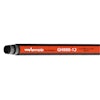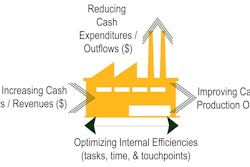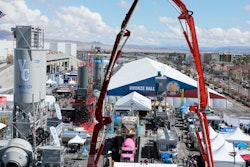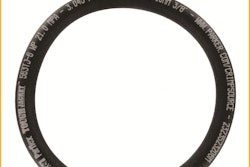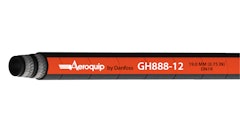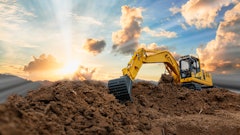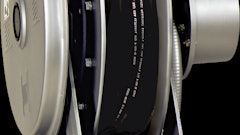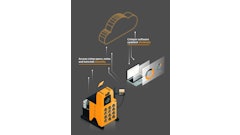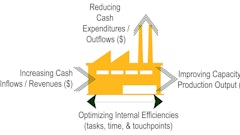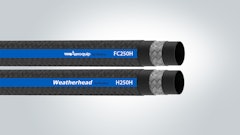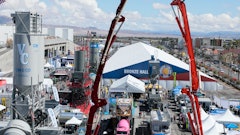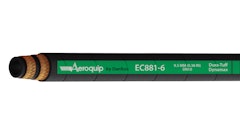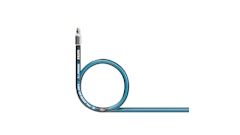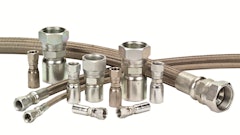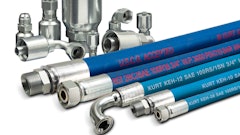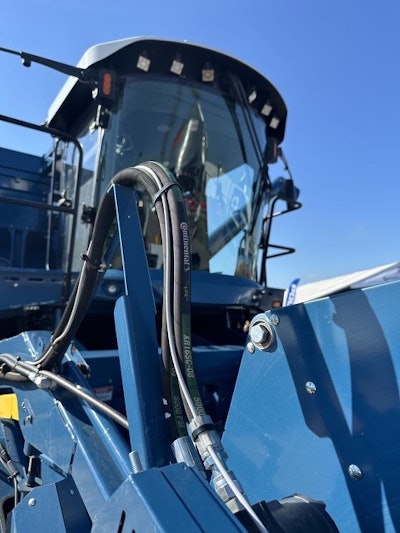
For agriculture equipment manufacturers, hydraulic hose reliability is a critical factor in ensuring long-term equipment performance and minimizing costly downtime for customers. Although hoses may seem like a relatively simple component on a sophisticated piece of agriculture equipment, a single hydraulic hose failure can halt operations, leading to significant productivity losses for farmers. For example, a modern combine harvester can process up to 200 acres of soybeans per day, and just one hour of downtime during peak harvesting can result in lost revenue up to $10,000. By utilizing durable and efficient hydraulic systems, original equipment manufacturers (OEMs) can enhance equipment reliability, reduce maintenance costs, and improve customer and end user satisfaction.
Honing in on Hydraulic Hose Longevity
Hydraulic systems play a vital role in modern farm machinery, from power transmission to steering and lift functions. As agricultural operations demand higher productivity, equipment must withstand harsh environments, extreme temperatures and heavy-duty tasks such as plowing and harvesting.
At the core of these hydraulic systems are hoses that must be carefully designed, selected and integrated to ensure optimal performance. By prioritizing durability, compatibility and ease of maintenance, OEMs can manufacture machinery that delivers long-term value to end users by considering the following:
- Safety — Hose failures can result in serious injury or even death. Consider choosing a hose with a working pressure above operational requirements to minimize failure risk and help ensure worker safety.
- Material selection — Rubber hoses are often the best choice for heavy-duty industrial applications where high pressures, extreme flexibility and rugged durability are required like in construction, mining, agriculture and heavy machines. Thermoplastic hoses are better suited for lighter-duty applications where chemical resistance, weight savings, and temperature stability are more important. They are commonly used in industries such as aerospace, automotive, and chemical processing, where the hose needs to withstand exposure to chemicals, high temperatures and UV radiation. Additionally, thermoplastic hoses are often preferred in applications where precise dimensional stability and smoother fluid flow are critical. Consider how the equipment will most likely be used when selecting which type of hose material is best for various equipment types.
- Abrasion and chemical resistance — Hoses are frequently exposed to dirt, rocks, and rough terrain and surfaces. An abrasion-resistant cover extends hose life and reduces the risk of premature failure. Consider a hose’s exposure to fertilizers, pesticides and moisture — which are inevitable on a farm — to ensure fittings can withstand agricultural chemicals.
- Temperature considerations — Hoses should be designed to perform in extreme conditions, from freezing temperatures to high-heat environments. High heat may require special materials while freezing temperatures demand specific compounds to maintain flexibility and function.
By incorporating these considerations in the equipment design phase, agriculture equipment manufacturers can optimize hydraulic system performance while reducing long-term maintenance requirements.
 ContiTech
ContiTech
Compatible Connections Are Crucial
A hydraulic hose system is only as reliable as its connections. Prioritize using complete hose and fitting solutions from hydraulic hose manufactures that have deep expertise and a proven track record. Seamless compatibility between the hose and the connection will help ensure overall machine performance. Key considerations include:
- Fluid and pressure compatibility — OEMs should ensure that fittings match the pressure and fluid specifications of the machinery. If the specifications are off, it could be harmful for the end user or detrimental to the machinery.
- Corrosion resistance — Select fittings with protective coatings to withstand exposure to fertilizers and chemicals. This helps prevent system failures, extend the equipment’s lifespan, maintain performance and safety, and reduce lifetime maintenance costs.
- Optimized sizing — Properly sized fittings prevent leaks, pressure loss and premature equipment failure, which are all equally important when potentially hazardous fluids are flowing through the hoses.
- Integrated tracking solutions — Some hydraulic hose manufacturers are using modern technology to help improve hose performance. For example, traceability solutions enhance maintenance efficiency and traceability. Closer tracking of hose health and maintenance helps ensure that machines don’t have to be taken out of operation for repair during a crucial planting or harvest time.
 ContiTech
ContiTech
Optimized Hose Routing for Enhanced Durability
It may seem like the only real consideration when routing a hose is to make sure it connects point A to point B, but many other factors play into hose performance and longevity. Properly planning the hose path can minimize stress and wear and tear on the hose, helping it work more efficiently and last longer. Best practices for hose routing include:
- Minimize excess bends and kinks — Route the hose so that fluid can flow through it as easily as possible. Avoid sharp bends and prevent kinking that can put undue stress on the hose reducing its lifespan.
- Reduce abrasion risk — Position hoses away from high-wear areas to help protect against abrasion and punctures and use protective coverings when abrasion risks can’t be avoided.
- Avoid crushing — Crushed sections of hose significantly reduce hose efficiency and performance and can result in the premature need for repair or replacement. Hoses should be routed clear of potential pinch points in moving machinery parts.
Other factors to consider when routing hydraulic hoses for farm machinery include ensuring the correct hose length, which will help with smooth and efficient routing. The specific functionality of the machine should also be factored into hose routing, for example avoiding planting mechanisms on planters, or ensuring that hoses can flex as needed around the articulation points on a loader. Designing machinery with optimized hose paths enhances reliability and reduces the likelihood of unexpected failures in the field for the end user.
Prioritize Preventative Maintenance
Just like farm equipment itself, routine maintenance can help extend the lifespan and efficiency of hydraulic hoses. Manufacturers can contribute to improved maintenance practices for end users by integrating features that facilitate regular hose inspections in the field. Continental, for example, offers a cover compound made from oil — and weather-resistant synthetic rubber that extends the life of high-pressure hoses, especially for jobs that requires tight bends, flexibility and abrasion resistance.
By incorporating equipment with built-in maintenance considerations, OEMs can enhance serviceability and prolong the lifespan of hydraulic components in the field. Manufacturers can also help by providing clear guidelines to the end user for hose inspections and replacements to help them be successful using and maintaining the equipment.
Hydraulic Hose Engineering Beyond Agriculture
Manufacturers of all types of heavy equipment should consider the importance of hydraulic hoses, especially for equipment used in rugged work environments. For example, the same principles that govern hydraulic hose longevity in ag machinery apply to construction and mining equipment, too.
Just like in agriculture, a hydraulic hose failure can bring mining operations or a construction jobsite to a screeching halt. Because equipment in these industries operates under extreme conditions, they require robust hydraulic systems to prevent costly downtime, enhance efficiency and keep workers safe.
Whether designing an excavator for a mining operation or a combine for large-scale farming, OEMs must prioritize hydraulic system durability to meet the rigorous demands of modern machinery. Investing in durable hydraulic solutions today ensures long-term success for both manufacturers and the industries they serve.
